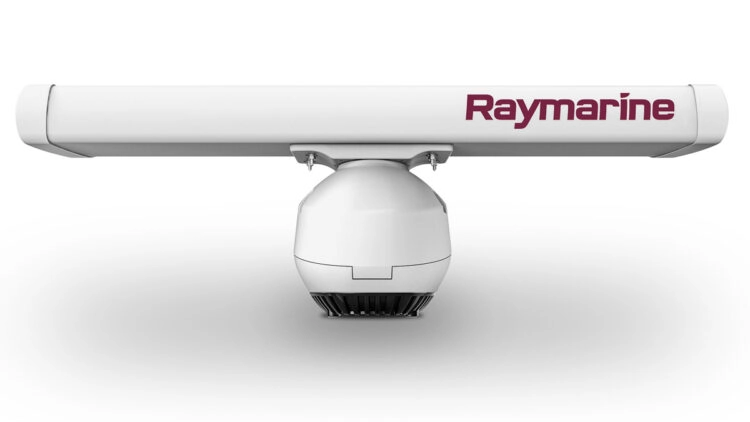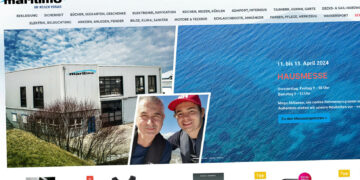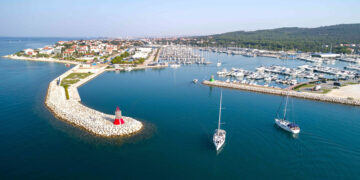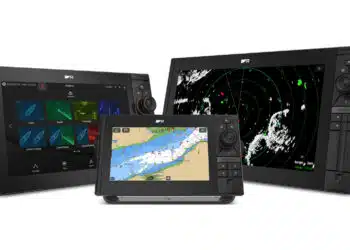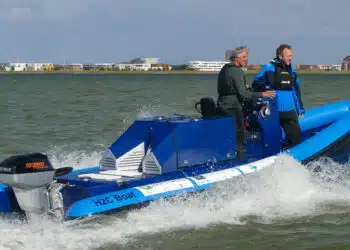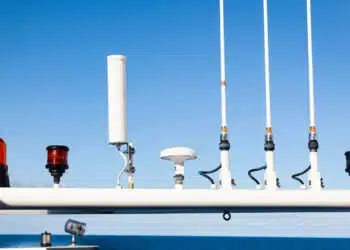A radar system supports safe navigation in uncertain weather and is extremely helpful when you are underway at night, in bad weather or in fog. Objects such as sea marks, pilings, other ships (even without lighting) and even rain fronts and of course the islands and coastlines that you cannot see visually due to the visibility restriction are detected by the radar and displayed on the screen.
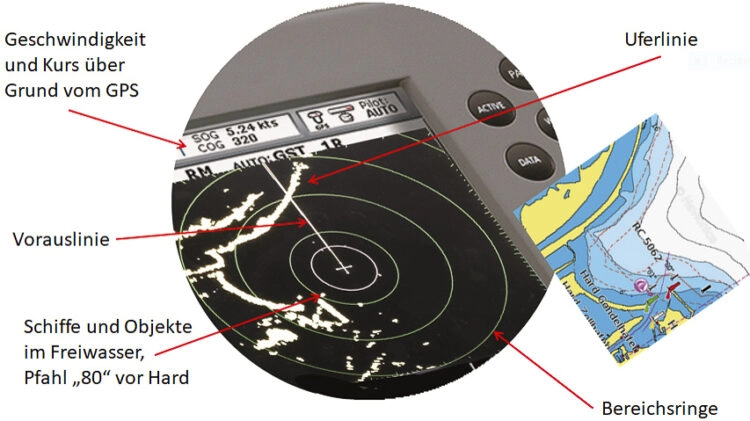
Modern radar systems can use the overlay function to superimpose the radar image directly onto the plotter’s nautical chart display, thus providing a quasi-labeled radar image, since the objects detected by the radar, such as buoys, navigation marks and the land masses, do indeed coincide with the nautical chart.
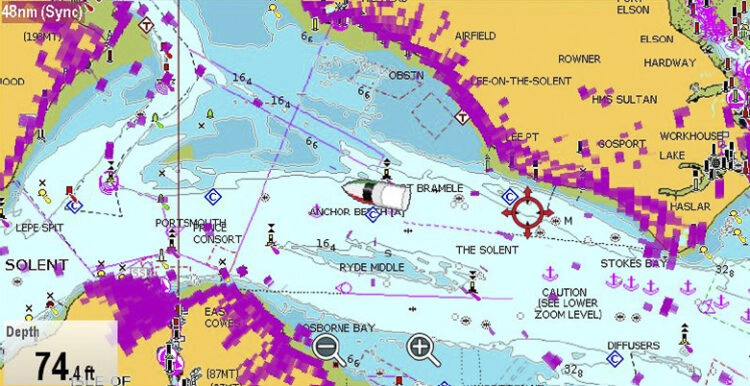
There are, however, different types of radar systems, which differ significantly from the function in some points.
Conventional radar systems
These systems (Raymarine HD, Garmin HDx, Furuno) have a strong microwave transmitter (from 2 kW to 12kW – depending on system size) and provide VERY good resolution in all ranges. Especially in heavy precipitation, these systems show their strength, as they can easily penetrate through the large moisture in the air. However, these systems have a blind area which is about 20 – 25m. In addition, these systems should be mounted in such a way that no crew member can be in the transmission cone (typically 25° vertical). The analog systems are mostly monochrome, the digital systems provide different colors – depending on the signal strength of the echo. Rain etc. e.g. provides a weaker echo than islands or ships in the immediate vicinity.
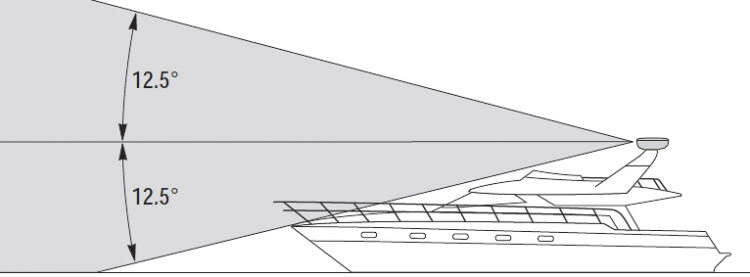
Broadband radar antennas
These radar antennas (e.g. 3G/4G from Simrad/Lowrance) have very low transmit power and are significantly inferior in heavy precipitation or at longer distances. For “fair weather drivers” who sometimes travel at night, these systems can be used well and also have a smaller, blind area than conventional antennas.
Pulse Compression Radar Systems
These systems (e.g. Raymarine Quantum) provide good results in all ranges with low transmitting power (and thus low power consumption). The blind range here is very small and objects only 5.6m away can already be displayed. These antennas work fully automatically and practically no adjustment is required from the user.
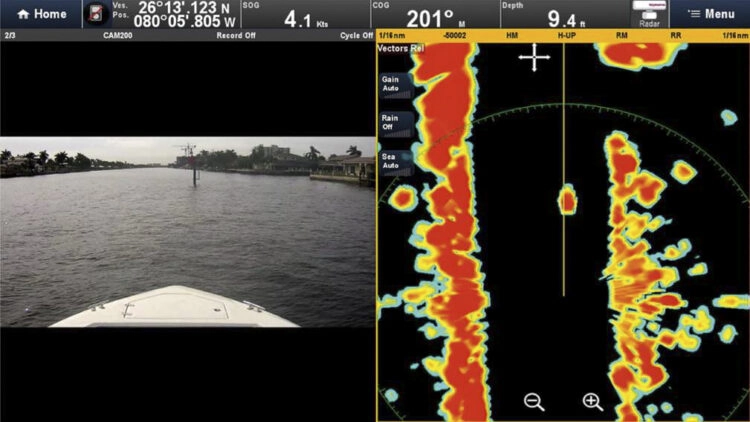
Pulse Compression Doppler Radar Systems
These antennas (e.g. Raymarine Quantum2) can automatically detect and evaluate moving objects in addition to the functions of the Quantum antenna in Doppler mode. Objects moving towards your vessel and thus posing a collision risk will be marked RED and objects moving away will be marked GREEN.
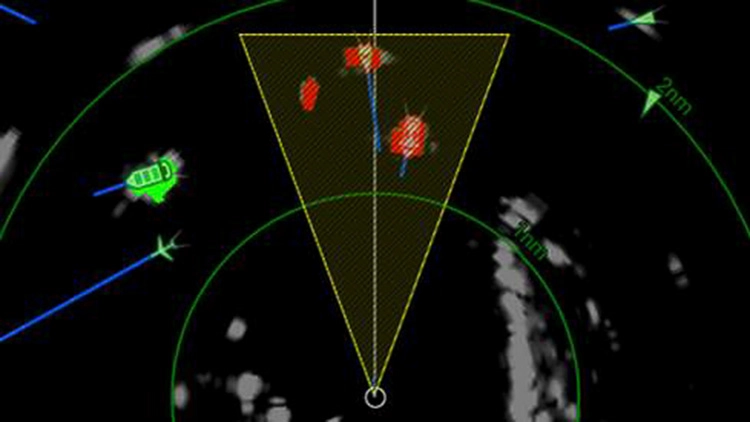
Operation of a modern radar system
The operation of modern radar systems is incomparably easier than it was just a few years ago. Through intelligent software in the multifunction screens and a multiple computing power through quad processors (e.g. in the Raymarine Axiom series), virtually no adjustment work is required from the user to get already a good radar picture.
Besides the selection of the desired range (range), the setting of TUNE and GAIN on each radar unit have the greatest influence on the image. This controls the sensitivity and the transmit gain. On most modern radar systems, this setting is automatic. Only under very special circumstances, a manual readjustment can improve the image…..
With all radar systems, however, there can be limitations due to swell or rain. There are controls that can filter out these effects. Please note, however, that if these filters are operated manually and turned up too far, target objects can also be filtered away here.
The overlay function is the insertion of the radar image into the nautical chart. For this to work well, an electronic compass (which can also be the compass of the autopilot) must be connected in the system. The transparency of the radar echoes – as the reflections of objects on the radar image are called – can be controlled so that the labeling on the nautical chart AND the radar image are clearly visible at the same time. If there is also an AIS receiver in the system, vessels equipped with AIS will also be “labeled” on the radar image.
Radar systems – maximum safety on board
In conclusion, it can be said that radar systems provide safety at sea significantly. The various models available mean that the right system can be configured for any application. Get advice Before buying a radar system from a specialist for yacht electronics to get exactly the right system for your needs.
Information and advice
For more information about Navtex please contact the company WERNER OBER GmbH & Co KG – Yachtelektronik personally or by email.
Werner Ober GmbH & Co KG
Yachtelektronik
Reichsstraße 38
6890 Lustenau | Austria
Phone: +43 (0)5577 824 19
Email: werner.ober@yachtelektronik.at
Web: www.yachtelektronik.at


